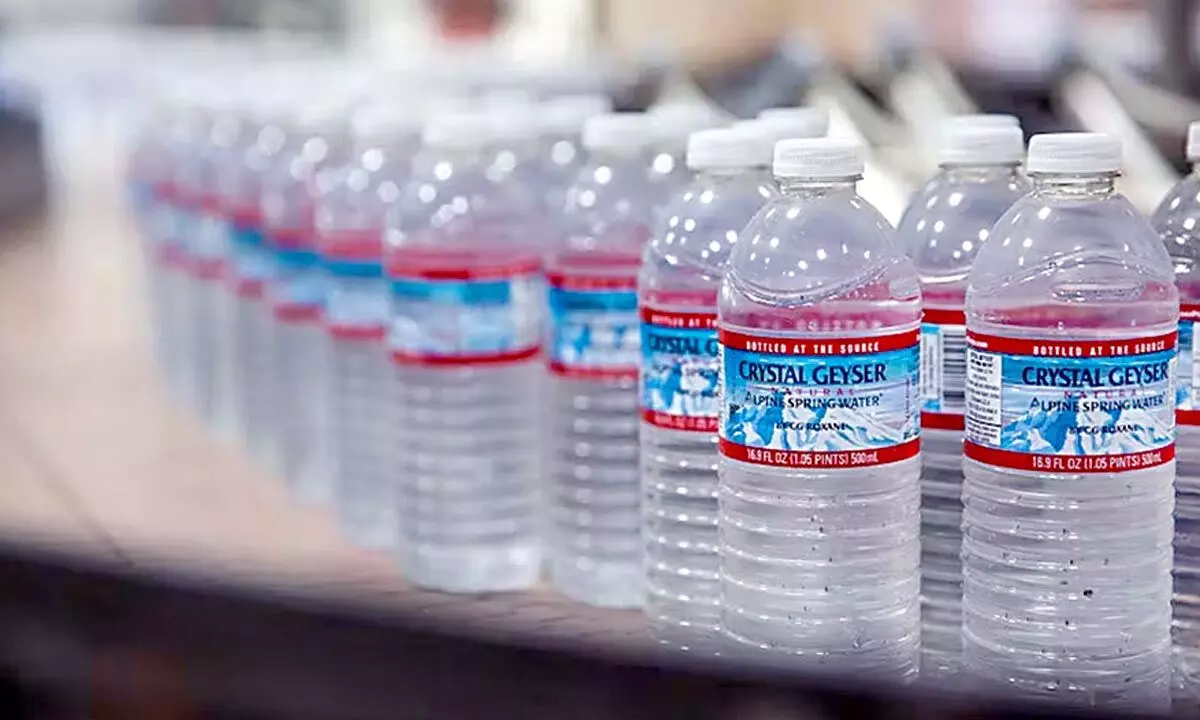Bottled water industry mints money while masking the global water crisis
Last year, WHO estimated that the current rate of progress needs to quadruple to meet the SDGs 2030 target
image for illustrative purpose

In many low and middle-income countries, particularly in the Asia Pacific, rising consumption of bottled water can be seen as a proxy indicator of decades of governments' failure to deliver on commitments to safe public water systems. This further widens the global disparity between the billions of people who lack access to reliable water services and the others that enjoy water as a luxury
Bottled water is one of the world's most popular beverages, and its industry is making the most of it. Since the turn of the millennium, the world has advanced significantly towards the goal of safe water for all.
In 2020, 74 per cent of humanity had access to safe water, which is 10 per cent more than what it was two decades back. In hindsight, that still leaves two billion people without access to safe drinking water.
Meanwhile, bottled water corporations exploit surface water and aquifers — typically at very low cost — and sell it for 150 to 1,000 times more than the same unit of municipal tap water. The price is often justified by offering the product as an absolute safe alternative to tap water. But bottled water is not immune to all kinds of contamination, considering that it rarely faces the rigorous public health and environmental regulations, which public utility tap water does.
In our recently published study, which studied 109 countries, it was concluded that the highly profitable and fast-growing bottled water industry is masking the failure of public systems to supply reliable drinking water for all. The industry can undermine progress of safe-water projects, mostly in lowand middle-income countries, by distracting development efforts and redirecting attention to a less reliable and less affordable option.
The fast-growing bottled water industry also impacts the UN's Sustainable Development Goals (SDG) in many ways. The latest UN University report revealed that the annual sales of the global bottled water market are expected to double to $500 billion worldwide this decade. This can increase stress in water-depleted areas while contributing to plastic pollution on land and in the oceans.
Growing faster than any other in the food category worldwide, the bottled water market is biggest in the Global South, with the Asia-Pacific, Africa and Latin American and Caribbean regions accounting for 60 per cent of all sales. But no region is on track to achieve universal access to safe water services, which is one of SDG 2030 targets. In fact, the industry's greatest impact seems to be its potential to stunt the progress of nations' goals to provide its residents with equitable access to affordable drinking water.
In the global north, bottled water is often perceived to be healthier and tastier than tap water. It is, therefore, more a luxury good than a necessity. Meanwhile, in the global south, it is the lack or absence of reliable public water supply and water management infrastructure that drives bottled water markets. Therefore, in many low and middle-income countries, particularly in the Asia Pacific, rising consumption of bottled water can be seen as a proxy indicator of decades of governments' failure to deliver on commitments to safe public water systems. This further widens the global disparity between the billions of people who lack access to reliable water services and the others that enjoy water as a luxury. In 2016, the annual financing required to achieve a safe drinking water supply throughout the world was estimated to cost $114 billion, which amounts to less than half of today's roughly $270 billion global annual bottled water sales.
Last year, the World Health Organisation (WHO) estimated that the current rate of progress needs to quadruple to meet the SDGs 2030 target. But this is a colossal challenge considering the competing financial priorities and the prevailing business-as-usual attitude in the water sector.
As the bottled water market grows, it is more important than ever to strengthen legislation that regulates the industry and its water quality standards. Such legislation can impact bottled water quality control, groundwater exploitation, land use, plastic waste management, carbon emissions, finance and transparency obligations, to mention a few.
Our report argues that, with global progress toward this target so far being off-track, expansion of the bottled water market essentially works against making headway, or at least slows it down, adversely affecting investments and long-term public water infrastructure.
Some high-level initiatives, like an alliance of global investors for sustainable development, aim to scale up finance for SDGs, including water-related ones. Such initiatives offer the bottled water sector an opportunity to become an active player in this process and help accelerate progress toward reliable water supply, particularly in the global south.
(The writers are from United Nations University)

